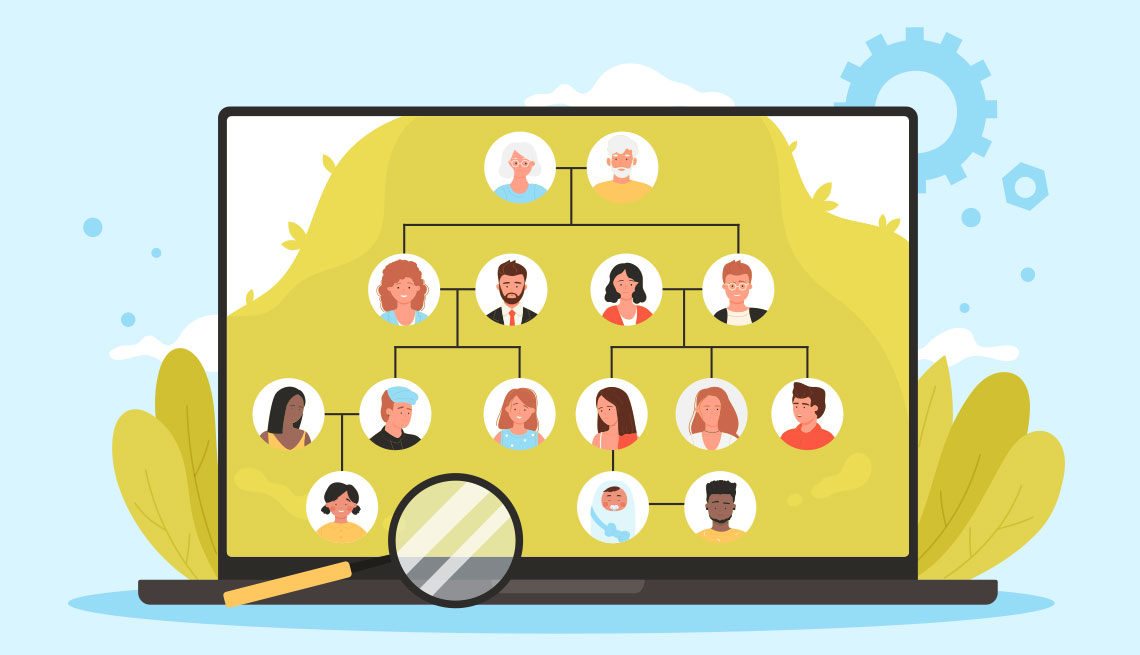
- Select a language for the TTS:
- UK English Female
- UK English Male
- US English Female
- US English Male
- Australian Female
- Australian Male
- Language selected: (auto detect) - EN
Play all audios:
HOW MUCH ARE YOU WILLING TO REVEAL TO THE PUBLIC? COPIES CAN LIVE ON. Ancestry customers have the option to create public or private family trees. People who are living are visible only to
the tree owner and anyone the tree owner invites to see. If you upload files to a public tree that you later make private or delete, those files may continue to exist on family trees of
people who saved them to their trees while your tree was public. If you share a tree with a relative, you can let the relative contribute to or edit your tree or merely let the person read
it without editing privileges. If you are working with cousins, say, and give them the ability to make changes to your tree, you also can decide whether or not they can see other people on
the tree who are still alive. For extreme privacy, Ancestry lets you create an unindexed tree that won’t show up in search results. PUBLICITY CAN HELP YOUR RESEARCH. Since building out a
family tree typically involves detective work, the more you share, the more you may discover. It’s a balancing act. “You don’t know who inherited the family Bible that has that information
you need [or has] a picture of your second great-grandmother that you’ve never seen before,” says Jennifer Utley, director of family history research at Ancestry. IS YOUR FAMILY COOL WITH
THIS? King recommends asking your kids, grandkids or other relatives if they want to get involved or are OK with you adding them to a family tree. Not everyone will be. “You have to
understand that when you do this, it is not just about you,” King says. “It is also about everyone you’re related to. I think there’s the potential risk to individuals who are either of some
high status or net worth, and/or the people who are associated or related to them.” Flashvector/Getty CAN LAW ENFORCEMENT ACCESS THE DNA? IT DEPENDS. Company policies vary on what DNA may
be shared with law enforcement. For its part, 23andMe says, “Unless required to do so by law, we will not release a customer’s individual-level personal information to a law enforcement
agency without asking for and receiving that customer’s explicit consent.” Ancestry’s stance is similar: “DNA data is particularly sensitive, so we insist on a court order or search warrant
as the minimum level of due process before we will review our ability to comply with a request. We also seek to put our customers’ privacy first, so we also will try to minimize the scope or
even invalidate the warrant before complying.” The two companies issue transparency reports that list such law enforcement requests. They don’t happen often, but different rules may apply
when you spread the data around. SITE GIVES CLUES TO A MURDERER. GEDmatch is an online site where you can upload and compare DNA results across several testing sites, including Ancestry,
FamilyTree DNA, Living DNA, MyHeritage, tellmeGen and 23andMe. That way, you may find ancestors and genetic matches from a site you have no direct relationship with. If you’re worried about
privacy, you can use an alias and anonymous email address at GEDmatch. But if you opt in, which the company recommends, GEDmatch says law enforcement may use your DNA “to identify
perpetrators of violent crimes.” Sacramento, California–area investigators used GEDmatch to unmask the Golden State Killer in 2018 by studying third cousins. Two years later, Joseph James
DeAngelo pleaded guilty to 13 murders and 13 rape-related charges and was sentenced to life in prison without parole. GEDmatch says it began its opt-in policy in May 2019, so all its users
now can choose whether to share their information with law enforcement. “The more information that is gathered and the more widely that it is shared, it’s very hard to control downstream use
of that information,” Bernstein says. “And all of this is hard for a consumer to meaningfully control.”






